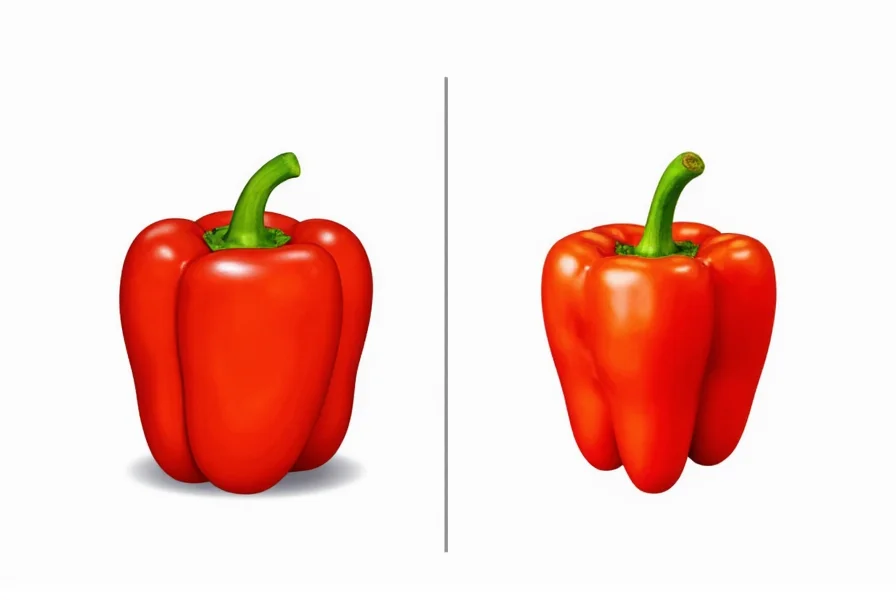The bell pepper emoji (🫑) has become a staple in digital conversations since its introduction, offering a visual representation of this common vegetable that avoids confusion with spicy peppers. Understanding its proper usage enhances digital communication clarity and prevents unintended misunderstandings in text-based interactions.
History and Standardization of the Pepper Emoji
Officially known as the bell pepper in Unicode documentation, this emoji received its official designation in Unicode 12.0 released in March 2019. The emoji gained widespread platform support throughout 2020, appearing consistently across iOS, Android, Windows, and major social media platforms. Its creation responded to user demand for more specific vegetable representations beyond the existing chili pepper emoji (🌶️), which had been available since Unicode 6.0 in 2010.
| Platform | Release Year | Visual Characteristics |
|---|---|---|
| iOS | 2020 | Bright green, glossy finish, stem detail |
| Android | 2020 | Darker green, matte appearance, simplified stem |
| Windows | 2021 | Medium green, 3D rendering, visible seeds |
| 2020 | Yellow-green hue, cartoonish style |
Meaning and Interpretation Across Contexts
The bell pepper emoji carries different connotations depending on context. In culinary discussions, it straightforwardly represents the vegetable itself. In health and wellness conversations, it often symbolizes healthy eating, vegetarian diets, or fresh produce. Unlike its spicy counterpart (🌶️), the bell pepper emoji generally conveys mildness rather than heat, making it valuable for nuanced communication.
When analyzing pepper emoji meaning in text messages, consider these common interpretations:
- Literal reference to bell peppers in recipes or grocery contexts
- Symbol of healthy eating or vegetarian/vegan lifestyles
- Indication of mild flavor (contrasted with chili pepper for spiciness)
- Visual representation in gardening or farming discussions
- Cultural references to Mediterranean or Eastern European cuisines where bell peppers feature prominently
Pepper Emoji vs. Chili Pepper Emoji: Critical Distinctions
Many users confuse the bell pepper emoji (🫑) with the chili pepper emoji (🌶️), leading to communication errors. The key differences matter significantly in digital conversations:

The bell pepper emoji features a blocky, rectangular shape with a distinct green color and thicker stem, while the chili pepper emoji appears elongated, often red, and has a thinner stem. Understanding these differences between pepper emoji and chili emoji prevents miscommunication, especially when discussing food preferences or recipes.
Practical Usage Guidelines
When incorporating the bell pepper emoji into digital communication, follow these evidence-based recommendations:
- Context matters most - Use the pepper emoji when discussing mild peppers specifically, not spicy foods
- Avoid ambiguity - Pair with clarifying text when the meaning might be unclear
- Consider platform variations - Remember that appearance differs across devices
- Don't substitute for chili pepper - Using 🫑 when you mean 🌶️ creates confusion about food spiciness
- Leverage in health contexts - Effective for representing vegetable consumption in wellness discussions
Cultural Considerations in Global Communication
The interpretation of the bell pepper emoji varies across cultures. In Mediterranean countries where bell peppers feature prominently in cuisine, the emoji carries strong culinary associations. In Eastern European contexts, it may reference traditional dishes like stuffed peppers. When communicating internationally, be aware that pepper emoji cultural significance differs, and the vegetable itself has varying importance across global cuisines.
Troubleshooting Common Pepper Emoji Issues
Users sometimes encounter problems with the bell pepper emoji:
- Missing emoji display - If recipients see a blank box, they're using an older operating system that hasn't adopted Unicode 12.0+
- Confusion with similar emojis - Always verify you've selected 🫑 (U+1FAD1) not 🌶️ (U+1F336)
- Inconsistent appearance - The same emoji renders differently across platforms, potentially altering perceived meaning
Future of the Pepper Emoji
As emoji standards evolve, we may see additional pepper variations. The Unicode Consortium has received proposals for different colored bell peppers (red, yellow, orange), which could provide more nuanced communication options in future updates. For now, the green bell pepper emoji remains the standard representation for this vegetable in digital communication.
Frequently Asked Questions
What's the difference between the pepper emoji and chili pepper emoji?
The pepper emoji (🫑) represents a green bell pepper with a blocky, rectangular shape, while the chili pepper emoji (🌶️) depicts a long, thin spicy pepper. The bell pepper emoji signifies mildness and freshness, whereas the chili pepper emoji indicates spiciness or heat. This distinction is crucial when discussing food to avoid confusion about flavor intensity.
When was the pepper emoji added to Unicode?
The bell pepper emoji (🫑) was officially added to Unicode 12.0 in March 2019 and became widely available across major platforms including iOS, Android, and Windows throughout 2020. It was created to provide a specific representation of bell peppers, distinguishing them from the existing chili pepper emoji that had been available since Unicode 6.0.
How do I properly use the pepper emoji in text messages?
Use the pepper emoji (🫑) when specifically referring to bell peppers or mild flavors in culinary contexts. It works well in discussions about healthy eating, vegetable recipes, or grocery shopping. Avoid using it when you mean spicy peppers (use 🌶️ instead). For clarity, pair the emoji with explanatory text when the context might be ambiguous, especially since its appearance varies across different platforms and devices.
Why does the pepper emoji look different on various devices?
Each platform (iOS, Android, Windows, etc.) designs its own version of emojis while adhering to Unicode standards. The bell pepper emoji appears as bright green with a glossy finish on iOS, darker green with a matte appearance on Android, and in 3D rendering on Windows. These platform variations of pepper emoji can sometimes alter perceived meaning, so always consider how your recipient might see it when communicating across different device ecosystems.










 浙公网安备
33010002000092号
浙公网安备
33010002000092号 浙B2-20120091-4
浙B2-20120091-4